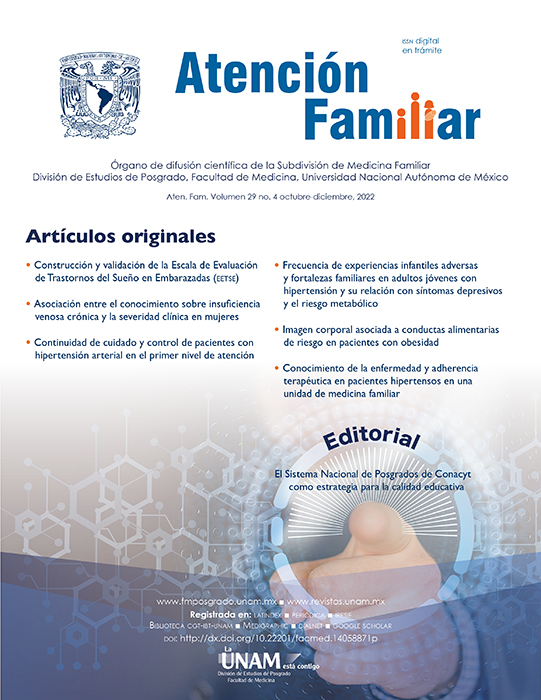Association Between Knowledge of Chronic Venous Insufficiency and Clinical Severity in Women
Main Article Content
Abstract
Objective: to determine the association between knowledge about chronic venous insufficiency and clinic severity in women attending a family medicine unit. Methods: cross-sectional and analytical study in 280 women with chronic venous insufficiency. The instrument Chronic Venous Insufficiency Knowledge, which evaluates theoretical knowledge about the disease, was applied. The clinical severity of the disease was determined by means of the Venous Clinical Severity Score instrument, which independently measures clinical manifestations of the disease. Spearman’s rho coefficient was used to assess the correlation between the degree of knowledge and clinical severity. Results: the overall assessment of knowledge of chronic venous insufficiency placed most of the participants at a low level (68%). A strong negative correlation was found between knowledge-presence of pain (Spearman’s rho coefficient of -0.611, p=0.000) and knowledge-presence of venous edema (Spearman’s rho coefficient of -0.648, p=0.000). When analyzing the correlation between knowledge and the presence of varicose veins, a moderate correlation was reported (Spearman’s rho coefficient -0.450, p=0.000), as well as with skin pigmentation (Spearman’s rho coefficient -0.464, p=0.000). The rest of the clinical severity topics reported a low correlation. Conclusions: low knowledge of chronic venous insufficiency is a risk factor for the severity of the disease. Therefore, it is vital to consider the implementation of educational strategies aimed at patients to improve knowledge and thus prevent disease progression.
Downloads
Article Details

This work is licensed under a Creative Commons Attribution-NonCommercial-NoDerivatives 4.0 International License.
